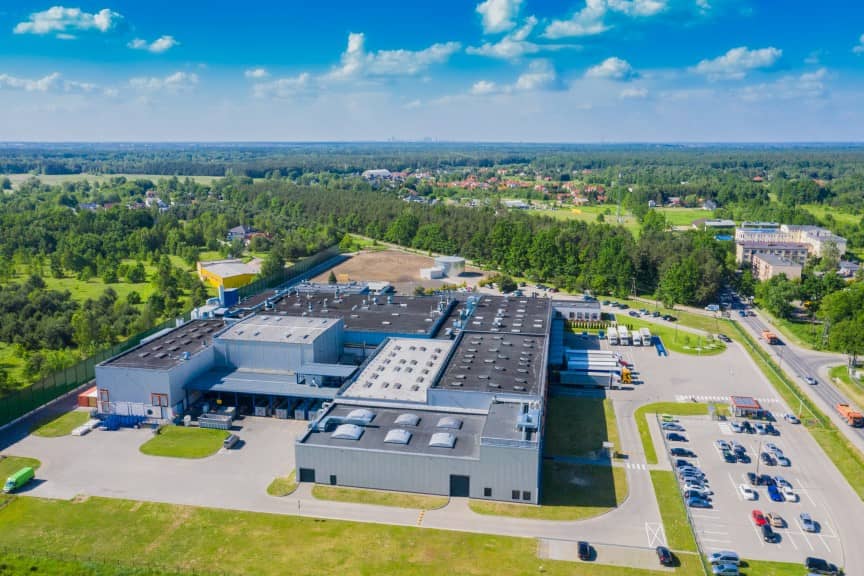
Supply Chain Design
Why does your supply chain need to be optimally configured?
Ideally, a supply chain is closely intertwined with company strategy. Every adjustment and decision affecting it can have a long-term impact on the success of the whole business, because of the proportion of fixed costs it involves, which is usually high. Current circumstances and new challenges often conflict with a company’s legacy structures.
Our supply chain consulting helps you to scrutinize existing structures,position production and storage locations as effectively as possible, optimize supplier and distribution networks, and tailor your supply chain management to the needs of your business. This allows you to identify and put in place the right mix of flexibility and cost efficiency.
What are the challenges?
Supply chain optimization always presents challenges that require the supply chain to be continuously adapted and carefully configured. That’s the only way to arrive at a smooth and sustainable business process. The challenges that supply chain design needs to surmount include:
- Changes to existing demands in warehousing, production, logistics, such as:
- Insufficient capacity in warehousing, production, or logistics caused by growth in the business. This requires new opportunities to be found so that demand can be met, including if the company continues to grow.
- Changing product range structures, such as the discontinuation of some products and the arrival of new ones.
- A high level of complexity in the current supply chain caused by such factors as:
- Legacy structures involving numerous locations (warehousing/production).
- Different logistics models used at different warehousing locations, some handling everything themselves and others using 3PL service providers, for example. This can cause businesses to consider different strategies, such as using a central warehouse instead of multiple local or regional ones.
- Rising costs
What are the benefits of a well thought-out supply chain configuration?
A supply chain configuration that is optimized for customer needs and market situations has a considerable positive impact on order lead times, goods availability, and the reliability and punctuality of deliveries. All in all, this means greater customer satisfaction. Reconfiguring a supply chain can also boost profits by reducing numerous cost items in the business:
- Reduced material expenditure due to less duplication
- Reduced personnel costs
- Reduced transport and warehousing costs
- Reduced interest costs
Other benefits aside from the aforementioned cost items can include:
- A more resilient supply chain (such as flexibility when demand changes, production capacity, transport costs, transport modalities (such as the elimination of sea freight) and so on)
- Greater transparency and a greater degree of standardization of processes (such as inbound and outbound goods flows, costs in warehousing, production, logistics)
- Greater sustainability (in relation to building up supply chain structures for long-term company success)
- A reduced carbon footprint (such as energy consumption, transport emissions)
- Greater delivery reliability and punctuality
- Greater customer satisfaction
- Efficient warehousing and transport structures
How we can help you
The perfect supply chain design varies from one company to the next, which is why we always adapt our approach to your business and the challenges you face. Configuration involves a total of three phases: situation analysis, target concept, and implementation.

1. Situation analysis
In the situation analysis, your current supply chain is assessed in terms of its existing strengths and untapped potential. This is when we identify opportunities and areas that could be developed.
2. Target concept
In this phase, we draw up the ideal target concept for your business, i.e. what your supply chain design should ideally look like in order to achieve greater profits. It’s also where we establish the measures that will be required to achieve this.
Drawing up a target concept involves activities such as:
- Simulating ideal geographical locations (center of gravity analysis), while taking into account customer-specific restrictions:
- Such as manufacturing different products or product ranges at particular locations
- Sea freight via European ports
- Direct transport from production locations to recipients
- Sensitivity analyses to evaluate the flexibility of the network
- How does the network respond to fluctuations in demand?
- How can the network respond to expanded production capacities?
- How do changes in transport costs influence network decisions?
- Drawing up business cases to compare the initial situation with the various defined network scenarios:
- Taking into account all of the relevant cost items for each scenario, in order to identify potential savings
- Evaluating other criteria such as sustainability, flexibility, and transparency
3. Implementation
Once objectives have been analyzed and drawn up, along with the activities these will require, it’s time to put things into action. The timing of this is flexible, which means the activities required to achieve the target concept can run in parallel or be staggered. We can assist you with our experience in implementing new measures.
HÖVELER HOLZMANN - a valantic company
Bahnstraße 16
40212 Düsseldorf
Tel.: +49 (0) 211 - 56 38 75 - 0
Fax: +49 (0) 211 - 56 38 75 - 69
Mail: info@
Contact us now:


